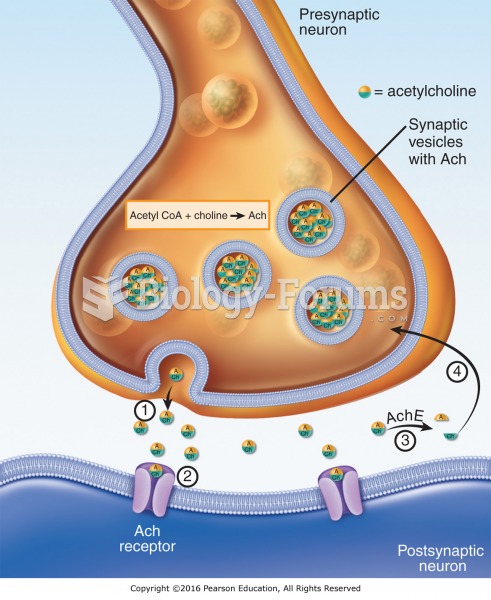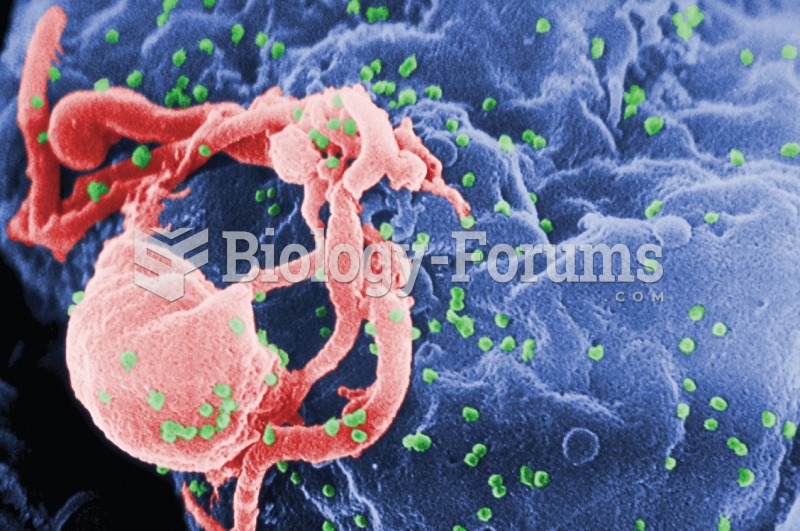|
|
|
Looking at the sun may not only cause headache and distort your vision temporarily, but it can also cause permanent eye damage. Any exposure to sunlight adds to the cumulative effects of ultraviolet (UV) radiation on your eyes. UV exposure has been linked to eye disorders such as macular degeneration, solar retinitis, and corneal dystrophies.
The Romans did not use numerals to indicate fractions but instead used words to indicate parts of a whole.
Colchicine is a highly poisonous alkaloid originally extracted from a type of saffron plant that is used mainly to treat gout.
Alzheimer's disease affects only about 10% of people older than 65 years of age. Most forms of decreased mental function and dementia are caused by disuse (letting the mind get lazy).
The first successful kidney transplant was performed in 1954 and occurred in Boston. A kidney from an identical twin was transplanted into his dying brother's body and was not rejected because it did not appear foreign to his body.
 Life cycle of acetylcholine (Ach): (1) Ach is released into the synaptic cleft; (2) Ach binds to ...
Life cycle of acetylcholine (Ach): (1) Ach is released into the synaptic cleft; (2) Ach binds to ...
 Scanning electron micrograph of HIV-1 budding (in green) from cultured lymphocyte. This image has ...
Scanning electron micrograph of HIV-1 budding (in green) from cultured lymphocyte. This image has ...





